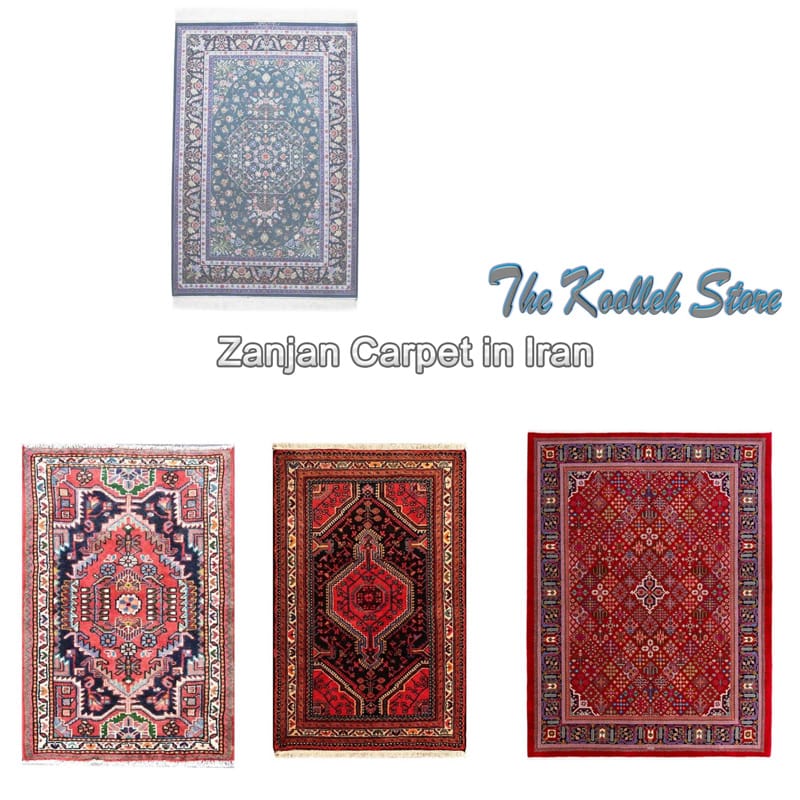Zanjan Carpet in Iran

Zanjan province is one of the active carpet weaving poles throughout the country. In Zanjan province, we divide it into several categories based on the type of texture and its raw materials consumption and its type and role.
In the first place in Zanjan province, far from the past, a carpet-like carpet was made in the area of Kiddar with a high number of rugs and a thick wool that was not used in this type of carpet. In fact, it is the most traditional handmade carpet in the province. Most of the villagers are familiar with the texture of this type of underlayment.
Of course, a number of rural sisters are now embracing this type of rug. Another type of carpet that is specific to Zanjan province, the carpet with the role of “Shah Balaghi” and False Fish, both of which were mentally executed and were woven finer than the original bearings but in terms of quality, the type of quality executive plan. They don’t have to.
This type of braiding in Zanjan has its own fans and those who cannot afford to buy small carpets buy this type of rugs which are lower in price. The most common type of wool rug in Zanjan province is Afshar handmade rug with about 30 to 40 ridge. This type of rug is imported and imported from West Azerbaijan to Zanjan province.
Carpet weavers in Zanjan and Tarom, Garmab and its affiliated villages produce most of this type of carpet. It has been about 50 to 60 years since the design was introduced into the Zanjan rug, which is actually a very abstract shape, in fact five fish designs, with different colors, blended together and repeated as a single carpet. .
Weavers of this type of carpet are most of the residents of Zanjan city who are fully satisfied with the production of these weaving and have a good market in sales. Needless to say, there are still imported motifs on the map of Zanjan carpets which include: Shah Abbasi map, Golang, hunting ground, chess etc which have been imported from other provinces to Zanjan and because of the role of these roles, interest in diversification. In the role, it was between weavers.
It is necessary to explain that these types of carpets are selling very well. Due to the abundance of cheap, skilled and skilled labor in Zanjan province, silk carpets have been widespread among Qom and Kashan manufacturers for over 50 years, and silk carpet traders have deployed a large number of skilled and inactive craftsmen in the province. The carpet is made of silk carpets, and due to the remarkable talent of Zanjan carpet artists as well as the good income of this carpet, they have increased significantly compared to other carpets of this type.
It goes without saying that silk carpet manufacturers in Zanjan are competitive in terms of quality, quality of their products with carpet production in Qom, Isfahan and Kashan provinces. In some cases, even more quality and better quality is praised and appreciated by the art producers in this province. The carpets in Zanjan province are made of cotton wool wells, except silk carpets.
Some of these wools are ripe and dyed by locals in the province itself and in the villages and most of the raw materials consumed are from Tabriz and Kashan. Dyeing in carpet production areas is unfortunately carried out by chemicals, which has provided the grounds for the transformation and conversion of chemical dyeing into vegetable by the province’s handicraft management.
Traditional and old carpets of Zanjan carpet are very popular in many villages of the province, including Qaltuk, Bidgineh and Abhar. Explaining that one of the oldest and most desirable carpets in the country not so long ago was the Qaloqq Zanjan carpet, which fortunately preserves its history and the producers of this area continue to produce traditional carpets with a number ranging from about 25 to 28. They pay.






Leave A Comment
You must be logged in to post a comment.